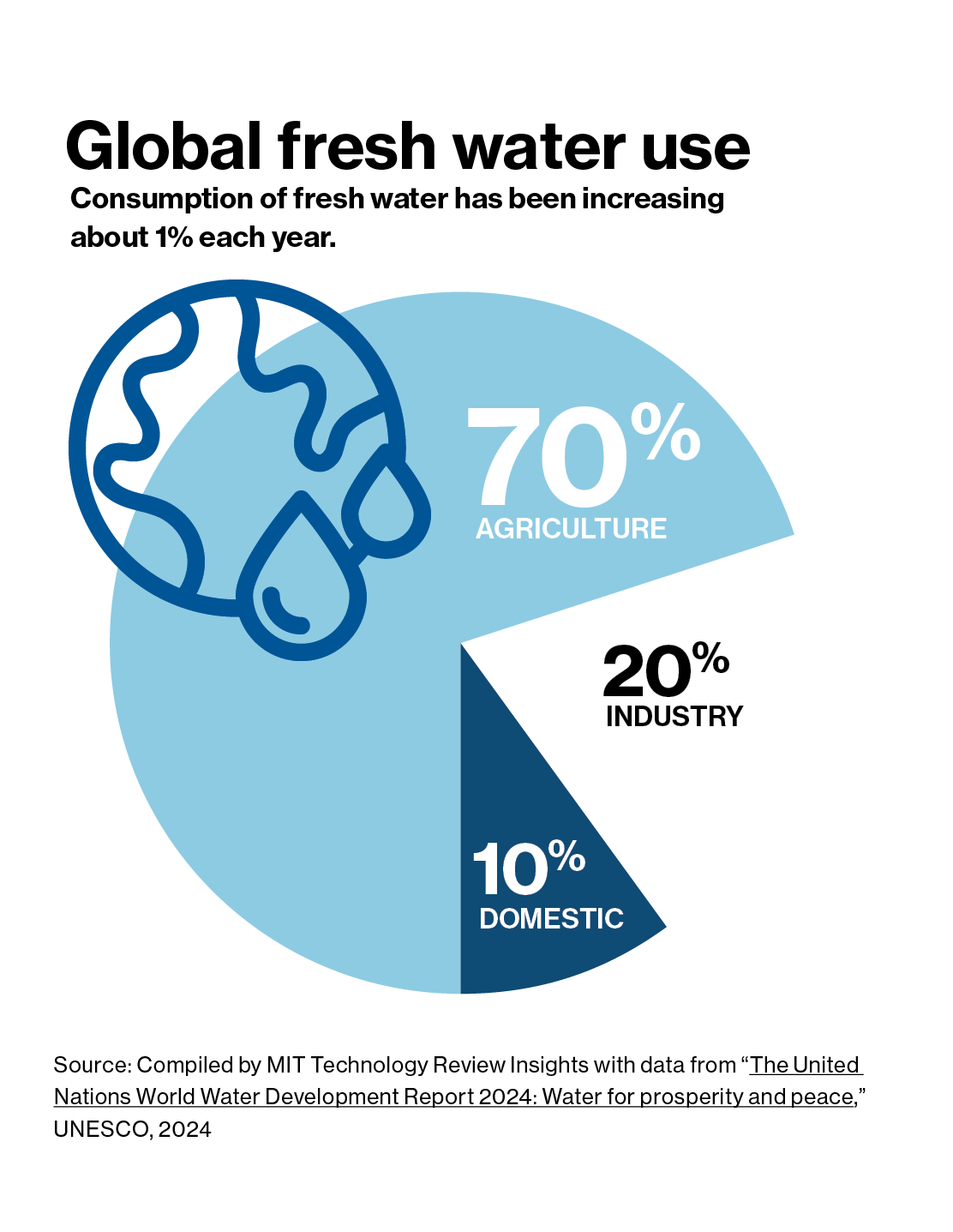Economic innovations, notably AI and electric vehicles, are also increasing industrial demand for water. “When you look at advanced manufacturing and the way technology is changing, we’re requiring more, higher volumes of ultrapure water [UPW]. This is a big driver of the industrial water market,” Simm says. AI, computing, and the electric vehicle industries all generate immense quantities of heat and require sophisticated cooling and cleaning. Manufacturing silicon wafers for semiconductor production involves intricate cleaning processes, requiring up to 5 million gallons of high-quality UPW daily. With rising demand for semiconductors, improvements in water treatment and reuse are imperative to prevent waste.
Data-driven industrial water management technologies are revolutionizing how enterprises approach conservation and sustainability. They are harnessing the power of digital innovation by layering sensors, data, and cloud-based platforms to optimize physical water systems and allow industrial and human users to share water access. Integration of AI, machine learning (ML), data analytics, internet of things (IoT) and sensors, digital twins, and social media can enable not just quick data analysis, but also can allow manufacturers to minutely measure water quality, make predictions using demand forecasting, and meet sustainability goals.
More integrated industrial water management solutions, including reuse, industrial symbiosis, and zero liquid discharge (ZLD), will all be crucial as greenfield industrial projects look toward water reuse. “Water is an input commodity for the industrial process, and wastewater gives you the opportunity to recycle that material back into the process,” says Simm.

Treating a precious resource
Water filtration systems have evolved during the past century, especially in agriculture and industry. Processes such as low-pressure membrane filtration and reverse osmosis are boosting water access for both human and industrial users. Membrane technologies, which continue to evolve, have halved the cost of desalinated water during the past decade, for example. New desalinization methods run on green power and are dramatically increasing water output rates.
Advances in AI, data processing, and cloud computing could bring a new chapter in water access. The automation this permits allows for quicker and more precise decision-making. Automated, preset parameters let facilities operate at capacity with less risk. “Digital technology and data play a crucial role in developing technology for water innovations, enabling better management of resources, optimizing treatment processes, and improving efficiency in distribution,” says Vincent Puisor, global business development director at Schneider Electric.
This content was produced by Insights, the custom content arm of MIT Technology Review. It was not written by MIT Technology Review’s editorial staff.


